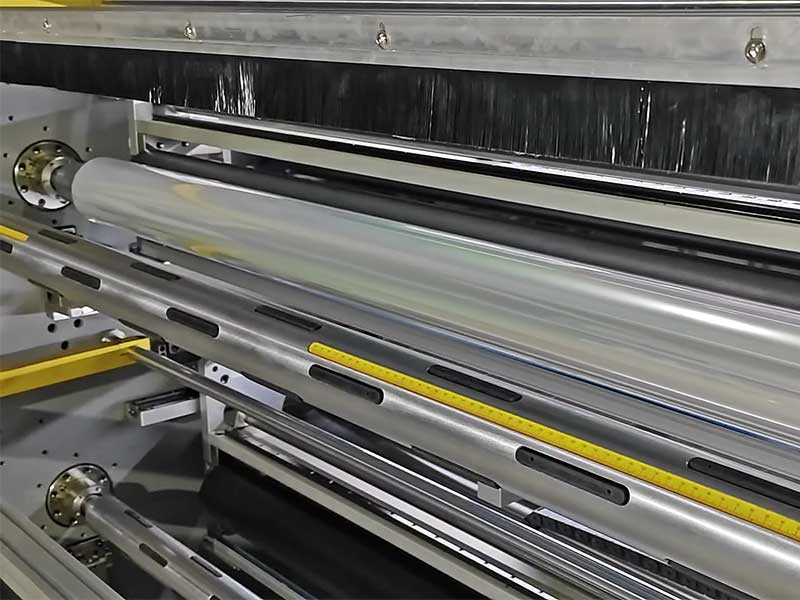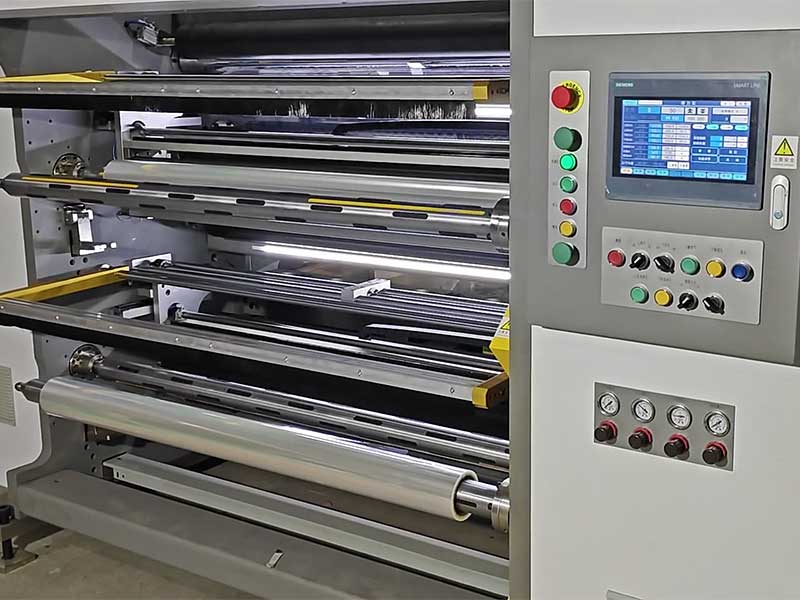In today's increasingly refined automotive aftermarket services, the cutting accuracy and efficiency of a car's "invisible suit", the sun film, are directly related to the professional image and profitability of the store. An automotive solar film slitting machine with excellent performance and easy operation is no longer a simple "cutting tool", but an indispensable "tacit partner" in your business field.
So, in the face of a dazzling array of products on the market, how to clear the fog and choose a solar film slitting machine that truly "understands you" and fits your business? Please accept this detailed selection guide.

Step 1: Read yourself - clarify your core needs
Before looking for a device that "understands you", first "understand yourself". Start by asking yourself a few key questions:
1. Business scale and daily output? It is a service for quick repair and fast insurance shops, cutting dozens of volumes a day; Or is it a large chain or professional film center that cuts hundreds of rolls a day? This determines the level of your need for machine efficiency and durability.
2. What types of membranes are mainly cut? Is it a conventional ceramic film, a metal film, or a difficult invisible jersey or paint protection film? The characteristics of different materials (e.g. thickness, viscosity, ductility) place different requirements on the tension control and blade system of the machine.
3. What are the functional requirements? Do you only need basic straight cutting and cross-cutting functions, or do you need advanced functions such as special-shaped cutting, automatic nesting, and roll film docking? The more features you have, the more efficient you are, but the investment and maintenance costs also increase commensurately.
4. What is the technical level of the operators? Do you need a device that is "smart" and "simple" enough for novices to get started quickly? It's about the choice of human-computer interface and automation.
5. What is the budget range? Clarifying the budget scope can help you find the best balance between "sufficient" and "easy to use".

Step 2: Review the "partner" - analysis of key performance indicators
A "know you" slitting machine must perform well in the following core performance:
1. Precise "brain": control system and software
This is the soul of the machine and determines whether it is "smart" or not.
• Stability: Preferential selection of industrial-grade PC or well-known PLC as the control core to ensure long-term operation without crashing or lagging.
• Ease of use: Graphical touchscreens, intuitive icons, and menus greatly reduce learning costs. It supports one-click import of model data, graphical preview and other functions, which can avoid human input errors.
• Functionality: Good software should support automatic layout optimization (to minimize material savings), historical order storage, remote upgrades, etc., which are all powerful tools to improve efficiency.
2. Stable "hands": transmission and cutting system
This is the machine's actuator that determines the "perfection" of the cutting result.
• Transmission system: High-precision servo motors and precision ball screws/timing belts are key to ensuring the accuracy of repeated positioning of cutting (usually within ±0.5mm). This is directly related to whether the cut diaphragm can be tightly seamed.
• Cutting System:
◦ Cutter head: For sun film and jerseys, vibrating knives are the mainstream choice. It cuts neatly, does not draw or warp, and is especially suitable for complex curves.
◦ Knife pressure control: must be adjustable. If it is too large, it will cut through the bottom paper, and if it is too small, it will not be able to cut through the film material. The ability to intelligently adapt to different materials is a plus.
◦ Bottom wheel: made of high-hardness and wear-resistant material to ensure that the cutting line remains straight under long-term use.
3. Sharp "nerves": feeding and tension control system
This is the core of ensuring that the membrane material is flat and does not deform during the cutting process.
• Feeding method: The mainstream is crawler feeding, which can provide uniform grip and prevent the film material from deviating and wrinkling.
• Tension control: This is an important indicator to distinguish between the high and low ends of the equipment. The excellent machine has active, full-loop tension control, which can sense and adjust the tightness of the film roll in real time, ensuring that every section of material from the beginning to the end of the volume is in the best tensioning state, perfectly avoiding cutting errors caused by tensile deformation.
4. Strong "physique": fuselage structure and materials
It's about the long-term stability and longevity of the equipment.
• Body frame: The body is made of thickened steel or aluminum alloy, which is rigid and not easy to deform, and can effectively resist vibration caused by long-term operation and ensure long-lasting precision.

Step 3: Match the needs - selection suggestions for different scenarios
• Start-up/Small and Medium-sized Stores:
◦ Core requirements: cost-effective, durable, and easy to operate.
◦ Selection focus: Pay attention to models with complete basic functions, stable transmission system (stepper motor or entry-level servo motor), and basic tension control. It is not necessary to pursue fully automatic and high-end functions, but the body structure and core components must be reliable.
• Large chain/professional film centers:
◦ Core requirements: high efficiency, high precision, high material utilization, support for complex film materials.
◦ Key points of selection: A system with full servo motor drive and full closed-loop tension control must be selected. The software needs to support automatic typesetting and database management. Consider adding automatic film bonding function to achieve uninterrupted production and maximize efficiency.
• Focusing on high-end jersey/color change film business:
◦ Core Requirements: Perfectly handle materials with high ductility and high thickness, with smooth and burr-free cutting edges.
◦ Selection focus: The fineness of tension control is a top priority. The precise adjustment of the knife pressure and the special coating of the blade to reduce sticking also require special consideration.
Step 4: Seeing is believing – on-site verification that can't be ignored
Before making a final decision, it is important to ask the supplier to provide on-site trial cutting services.
• Bring your own membrane: test with the most representative membrane materials you use every day, especially jerseys.
• Observe the whole process: from whether the feeding is smooth, to whether there is any abnormal noise during cutting, to whether the material is received neatly.
• Inspect the finished product: Carefully check that the cut edges are smooth, the measurement of critical dimensions is accurate, and the backing paper is not scratched after unveiling.
summary
Choosing an automotive solar film slitting machine that "understands you" is a systematic decision-making process. It is not about pursuing the most expensive or the most complete functions, but looking for the "business partner" that best matches your business status and future development in terms of accuracy, efficiency, stability and cost.
Start from understanding yourself, examine the core performance of the machine with a professional vision, and finally let the actual test make the final decision for you. I hope you can find the tacit partner who "understands you" the most, empower your professional services, and cut out a new world of your own in the fierce market competition.
 Intelligent deviation correction: the "invisible guardian" of automotive film slitting machine
Intelligent deviation correction: the "invisible guardian" of automotive film slitting machine Film revolution: an intelligent cutting knife, how to cut out the new profit space of the automotive film industry?
Film revolution: an intelligent cutting knife, how to cut out the new profit space of the automotive film industry? Speed and precision go hand in hand: where is the performance limit of the solar film slitting machine?
Speed and precision go hand in hand: where is the performance limit of the solar film slitting machine? From coil to finished product: the value of solar film slitting machine is sublimated
From coil to finished product: the value of solar film slitting machine is sublimated The invisible champion of cost reduction and efficiency increase: solar film slitting machine
The invisible champion of cost reduction and efficiency increase: solar film slitting machine